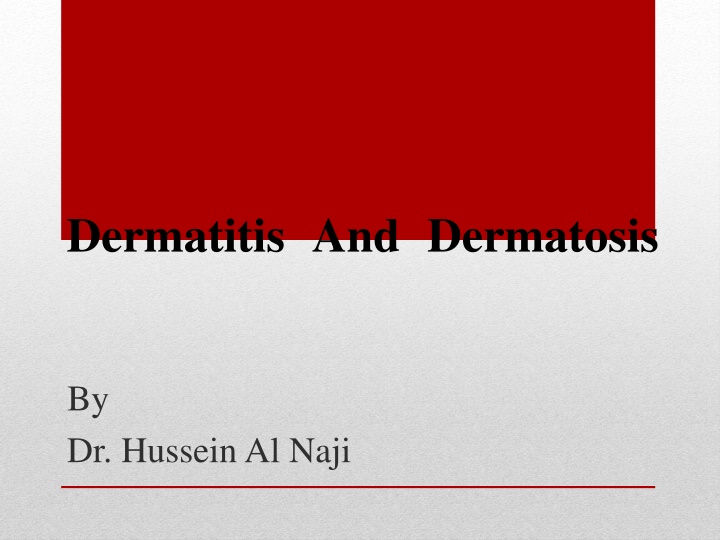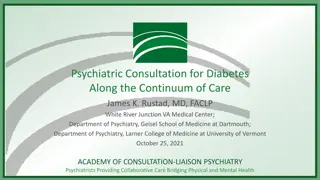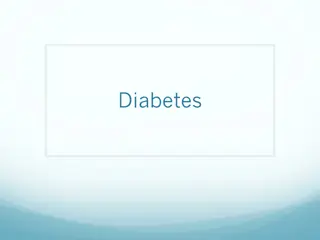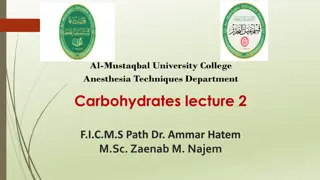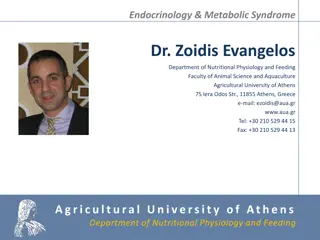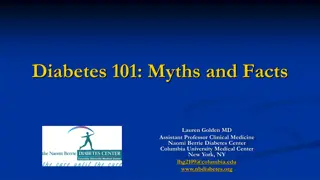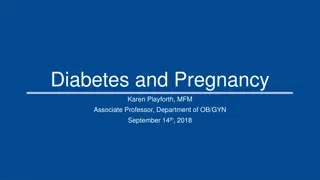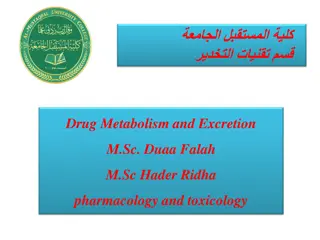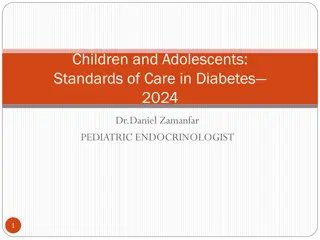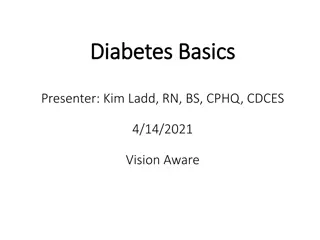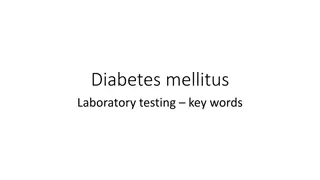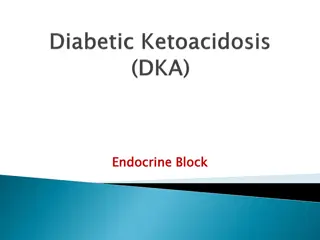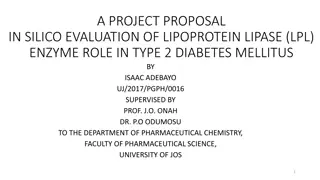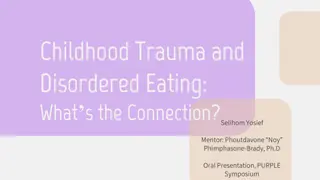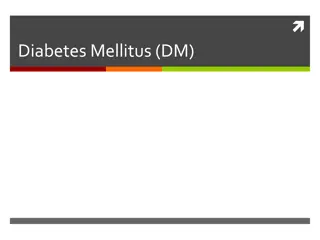Division of Endocrinology Diabetes and Metabolism 2018 Presentation
CRC rotations and lab rotations of various individuals pursuing careers in medicine, including research interests and educational backgrounds. The students are currently attending prestigious institutions and have future plans to attend medical school and specialize in various fields such as OB/GYN. They are focused on pursuing studies in pre-med, neuroscience, and comparative human development, highlighting their dedication to medical research and becoming future physicians.
Download Presentation

Please find below an Image/Link to download the presentation.
The content on the website is provided AS IS for your information and personal use only. It may not be sold, licensed, or shared on other websites without obtaining consent from the author.If you encounter any issues during the download, it is possible that the publisher has removed the file from their server.
You are allowed to download the files provided on this website for personal or commercial use, subject to the condition that they are used lawfully. All files are the property of their respective owners.
The content on the website is provided AS IS for your information and personal use only. It may not be sold, licensed, or shared on other websites without obtaining consent from the author.
E N D
Presentation Transcript
Dermatitis And Dermatosis By Dr. Hussein Al Naji
ETIOLOGY All Species 1. Mycotic dermatitis as a result of Dermatophilus congolensis, in horses, cattle, and sheep 2. S. aureus, a common finding in cases in all species, either as a sole pathogen or combined with other agents 3. Ringworm. 4. Photosensitive dermatitis 5. Chemical irritation (contact dermatitis) topically . 6. Arsenic systemic poisoning
7. Mange mite infestationsarcoptic, 8. psoroptic, chorioptic, demodectic mange. 9. Biting flies, especially Culicoides spp.; observed most commonly in horses, but also in other species 10. Stephanofilaria spp. Dermatitis 11. Strongyloides (Pelodera) spp. Dermatitis Special Local Dermatitides Special local dermatitides include dermatitis of the teats and udder, the bovine muzzle and coronet, and flexural seborrhea, and are dealt with under their respective headings.
PATHOGENESIS Dermatitis is an inflammation of the deeperlayers of the skin involving the blood vessels and lymphatics. The purely cellular layers of the epidermis are involved only secondarily. The noxious agent causes cellular damage, often to the point of necrosis, and, depending on the type of agent responsible, the resulting dermatitis varies in its manifestations. It may be acute or chronic, suppurative, weeping, seborrheic, ulcerative, or gangrenous.
CLINICAL FINDINGS 1. Affected skin areas first show erythema and increased warmth. The subsequent stages 2. Edema of the skin and subcutaneous tissues may occur in severe cases. 3. The next stage may be the healing stage of scab formation; if the injury is more severe, there may be necrosis or even gangrene of the affected skin area. 4. Spread of infection to subcutaneous tissues may result in a diffuse cellulitis or phlegmonous lesion. 5. Adistinctive suppurative lesion is usually classified as pyoderma. 9. A systemic reaction is likely to occur when the affected skin area is
10- Shock, with peripheral circulatory failure and caused shock 11. Toxemia as a result of absorption of tissue breakdown Pemphigus Pemphigus is an autoimmune disease of the skin occurring in mature horses, usually 5 years of age or older, as well as in foals. Vesicles and pustules are usually very difficult to find because they progress rapidly to crusts, exfoliation, alopecia, and scaling. There are a number of manifestations, of which pemphigus foliaceus is the most common. Pemphigus vulgaris and bullous pemphigoid, in contrast, are rare. Pemphigus is a chronic autoimmune disease often accompanied by severe weight loss.
Differential Diagnosis 1. Hyperhidrosis and anhidrosis are dysfunctions of sweating and have no cutaneous lesion. 2. Cutaneous neoplasm is differentiable on histopathological examination. 3. Epitheliogenesis imperfecta is a congenital absence of all layers of skin. 4. Vascular nevus is a congenital lesion commonly referred to as a birthmark.
Treatment 1. Primary treatment is removal of the (presumed) causative agent. 2. supportive treatment includes treatment for pruritus secondary infection, shock, toxemia, or fluid and electrolyte loss.
Photosensitization EtiologyAnd Epidemiology Photosensitization is caused by exposure of tissue containing certain photoactive substances to light of specific wavelength. Substances with the potential to accumulate in skin and get activated by solar irradiation are termed photosensitizing substances (PSs).
Photosensitization differs from sunburn in that it requires the presence of a photosensitizing agent, it is triggered by exposure to a wavelength of light between 320 and 400 nm (in contrast to sunburn, which in most cases is the result of exposure to light with lower wavelength), its onset is rapid (in contrast to the more delayed onset with sunburn), and skin lesions are considerably more severe than with sunburn.
Type I, primary photosensitization caused by PSs of exogenous origin (no underlying primary pathology of the organism). Occur due to exogenous PSs can enter the organism through oral ingestion (e.g., PSs contained in feed), parenteral administration (e.g., certain drugs), or direct absorption through skin. Type II, photosensitization caused by aberrant pigment metabolism. Occur due to porphyrins that may accumulate in an organism with disturbed heme synthesis. Type III, hepatogenous photosensitization caused by disturbed liver. Function such as livestock due to accumulate phylloerythrin . Type IV, idiopathic photosensitization that is of undetermined etiology.
PATHOGENESIS Penetration of light rays to sensitized tissues causes local cell death and tissue edema. Irritation is intense because of the edema of the lower skin level, and loss of skin by necrosis or gangrene and sloughing is common in the terminal stages. Nervous signs may occur and are caused either by the photodynamic agent, as in buckwheat poisoning, or by liver dysfunction.
Clinical signs 1. Primary cases (skin lesion) have cutaneous signs only (erythema, edema, necrosis, gangrene of light-colored skin or mucosae exposed to sunlight). 2. Secondary cases have also signs of hepatic dysfunction (jaundice, prostration, short course, death). 3. Systemic Signs include shock in the early stages, as a result of extensive tissue damage. There is an increase in the pulse rate, body temperature with ataxia and weakness. 4. Nervous Signs including ataxia, posterior paralysis and blindness, and depression or excitement, are often observed.
Differential diagnosis Clinical evidence of restriction of damage to white, wool-less skin on body dorsum and lateral aspects of limbs, teats, corneas, and tongue and lips. Treatment Primary: remove from exposure to sunlight and PS. Supportive: treat for infection, shock, toxemia. Nonsteroidal anti- inflammatory drugs (NSAIDs), corticosteroids, or antihistamines can be administered parenterally and adequate doses maintained.
